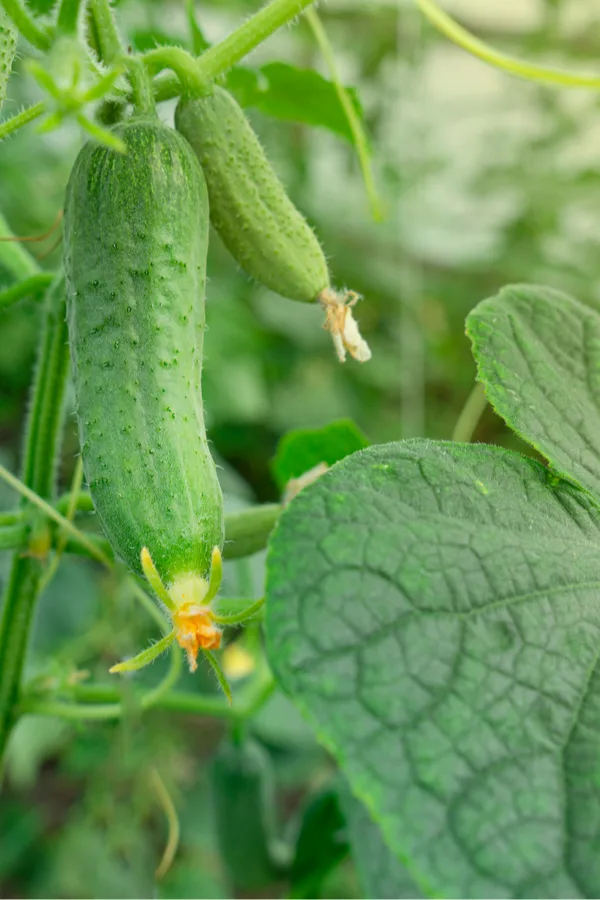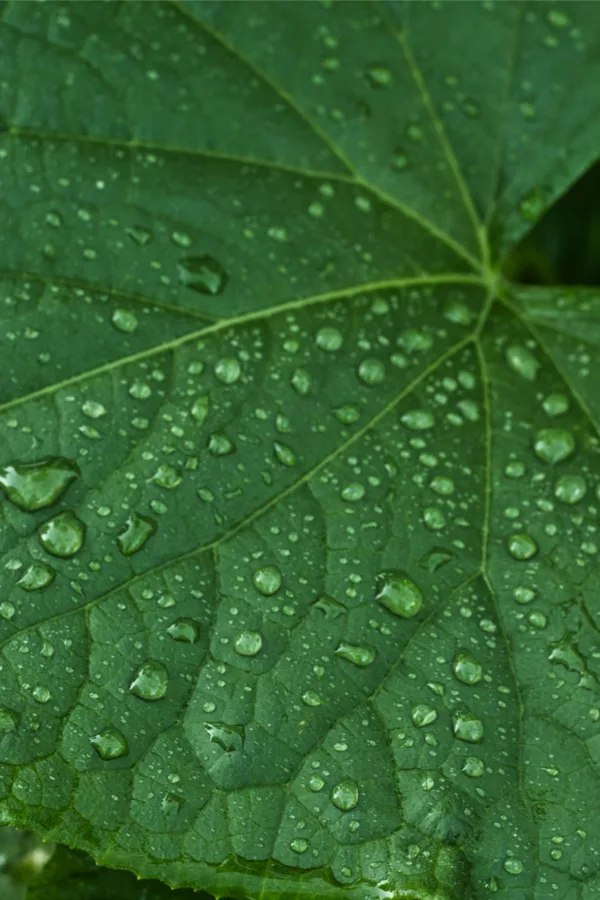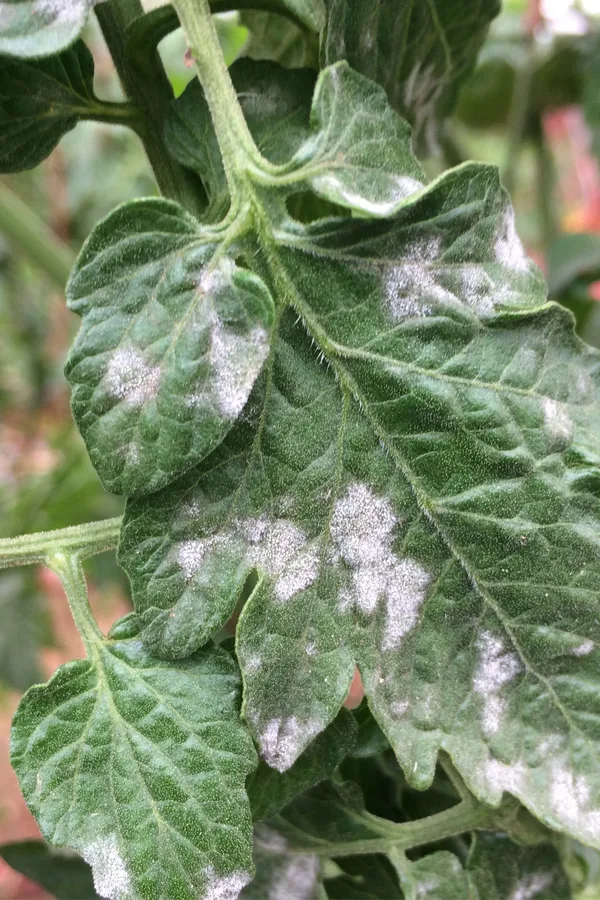Looking for a few great tips on how to prevent powdery mildew from attacking your cucumber plants this year?
One of the most common ailments of cucumber plants in the garden is the deadly scourge of powdery mildew. Powdery mildew begins with a few white or grayish-white spots appearing on the foliage of plants.
The spots are actually a fungus that will continue to form on the leaves, eventually leading to the complete collapse of the plant. Unfortunately, once the tell-tale white spots appear on the leaves, it is often too late to help the plant – and that is why prevention is the key to ultimate success!

Although mildew can attack a wide variety of vegetables, it is especially devastating to cucumber, melon, pumpkin and zucchini plants. And most often, it hits in the early spring, when conditions are ripe for the problem to occur.
The cool air and soil temperatures that spring brings can certainly set the stage for issues and play a big role in helping mildew to thrive. But armed with a few key tips and tricks, you can help your cucumber plants set up a strong defense, and in the process, keep this deadly issue at bay.
With that in mind, here are the simple secrets to success to keep your cucumber plants safe and healthy this year!
How To Protect Cucumber Plants From Powdery Mildew
The first key to success lies with knowing the conditions that mildew prefer, and doing your best to prevent those from occurring.
As noted above, more than anything else, powdery mildew loves cool, wet conditions. The longer plants are around excess moisture and lower temperatures, the more likely and susceptible they will be to develop the ailment.
Although you can’t control the weather, there are ways to help your plants deal with those cooler, wet spring conditions. The first line of defense is to plant them in the best possible place so that they get as much warming sunshine as possible every day!

Plant For Morning Sun – How To Prevent Powdery Mildew
For starters, always plant your cucumbers in a location that receives at least 8 hours of full sun. The sun provides more than just the warmth plants need to grow. The warm rays of the sun also allow the foliage and vines to dry off from early morning dew.
Morning dew is often an important source of postive moisture for plants. And that includes cucumber plants as well. But when that dew stays around all morning or into the afternoon, it as open invitation for mildew to take hold.
Plain and simple, the faster vines and foliage dry in the early cool morning, the less likely it is for mildew to find a way to start. And when your plants get a good dose of morning sunshine, they will dry off all the faster.
Avoid Watering At Night – How To Prevent Powdery Mildew
Keeping your plants as dry as possible through the cooler overnight hours is also critical for success. You can’t help when it rains of course, but it is important not to add additional moisture for the overnight.

As with many vegetable plants, watering at night can increase the risk of all kinds of issues, including mildew. Watering at night keeps heavy moisture around the stems and leaves at the worst time possible – when temperatures are cooler.
Watering plants early in the morning is the best time of all. This allows the plants to quickly dry off as the sun rises, and day time temperature heat up. And when you do water, keep from spraying the entire plant with a stream of water.
Instead, water right at or near the root zones of the plants. This keeps the foliage from becoming overly saturated for extended periods. It also happens to conserve water too!
Mulching Cucumber Plants – How To Prevent Powdery Mildew
When it comes to growing cucumbers successfully, mulch is a must! Not just for helping to prevent powdery mildew, but for keeping your plants healthy and vibrant. (See: The 5 Simple Secrets To Growing Great Cucumbers)
Mulch helps to keep the soil temperature regulated from the high heat of the day, and the cooler temperatures of the overnight. It also helps to keep weeds from establishing and stealing valuable resources from your soil and plants.

But more importantly, especially when it comes to preventing powdery mildew and other disease, mulch keeps the foliage and vines of plants from directly touching the soil.
The wet and often muddy soil of early spring can keep plants from drying out, making them much more susceptible to soil borne diseases. But mulch can keep the plants high and much dryer – and off of the cool wet soil.
Using Milk Spray To Prevent Powdery Mildew
If you have experienced powdery mildew in the past and it is often an issue for you, you may consider taking some preventative measures to keep it at bay. One of the best natural remedies is using a spray made from milk and water.
A 50% solution of whole milk and water applied to the plant’s foliage once a week can help prevent mildew. Begin applying once the first few leaves begin to form on plants in early spring, and continue until early summer. Apply weekly, or anytime after a heavy rain to help prevent the onset of the disease.
The ingredients in the milk coat the leaves and help to prevent mildew from ever taking hold. This is truly a great alternative for those who have plants who suffer from mildew year in and year out.
When Powdery Mildew Appears
Sometimes, an overly cool and wet spring makes it almost impossible to prevent the onset of powdery mildew. When this occurs, early and quick action can sometimes save a plant. But even more, it can save your surrounding plants!

The first line of defense is to remove and destroy any leaves that show the first signs of powdery mildew. Inspect your plants regularly, looking for the tell-tale white spots on leaves. If you can catch it early, removing infected leaves quickly can help keep the fungus from spreading.
Be sure to discard the leaves and keep them clear of the compost pile to avoid spreading the spores. Also, always wipe down your scissors or pruners with a mild disinfectant to keep from spreading to other plants you use them on.
Here is to keeping your cucumbers healthy and thriving this year, and safe from powdery mildew too!
Follow Our Facebook Page For Great Gardening Tips And Advice! This Is My Garden Facebook Page
This Is My Garden is a garden website created by gardeners, for gardeners. Jim and Mary Competti have been writing gardening, DIY and recipe articles and books and speaking for over 15 years from their 46 acre Ohio farm. They publish three articles every week, 52 weeks a year. Sign up today to follow via email, or follow along!

